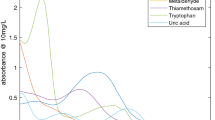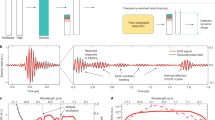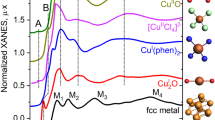Abstract
IN a recent communication1, Prof. F. Haurowitz and Dr. T. Astrup describe observations of absorption spectra on solutions of native and digested serum globulin, which are said to be in better accord with the classical theory of the structure of proteins than with the cyclol hypothesis. They reason that because, after digestion of serum globulin with trypsin to a stage at which only a fine opalescence is given with sulphosalicylic acid, there is no increased absorption at λ 240 mµ, there has therefore been no formation of CO groups from >C(OH)–N< groups which are required by the cyclol hypothesis.
This is a preview of subscription content, access via your institution
Access options
Subscribe to this journal
Receive 51 print issues and online access
$199.00 per year
only $3.90 per issue
Buy this article
- Purchase on Springer Link
- Instant access to full article PDF
Prices may be subject to local taxes which are calculated during checkout
Similar content being viewed by others
References
Haurowitz and Astrup, NATURE, 143, 119 (1939).
Author information
Authors and Affiliations
Rights and permissions
About this article
Cite this article
HOLIDAY, E. Absorption Spectra of Proteins. Nature 143, 895–896 (1939). https://doi.org/10.1038/143895a0
Issue Date:
DOI: https://doi.org/10.1038/143895a0
Comments
By submitting a comment you agree to abide by our Terms and Community Guidelines. If you find something abusive or that does not comply with our terms or guidelines please flag it as inappropriate.



